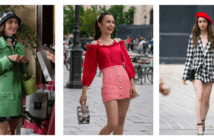[youtube]BSmLAO7Z4QE[/youtube]
Speakers: Paul Kontonis, vice president and group director, brand content, Digitas’ The Third Act (moderator); Nick Bailey, ECD, AKQA; James Kirkham, managing partner, Holler.
Paul Kontonis moderated this session on useful case studies for brands and networks seeking new ways to reach dual-screen audiences.
Bailey kicked off with a case study about Heineken, whose objective was to « make the UEFA Champions League more interesting ».
Although it is a sponsor, Heineken cannot associate its brand name with the Champions League in France.
« Alcohol brands have a problem in that it’s less and less easy for them to talk about their product and their brand values, » which is why online is such a good space for them, Bailey explained.
« We thought the most sensible thing to do was to start with a consumer insight: 70% of viewers watch on their own, at home. » Then they took that insight further: football is social, so 80% of at-home viewers are likely dual-screening. « They’re on their phones, they’re on their iPads and they’re talking to their friends about what’s happening on the pitch. »
It merits saying here that AKQA has an « enhance, don’t interrupt » philosophy. People are probably dual-screening during a match to avoid advertising, said Bailey, so the solution isn’t to try to distract them with yet another overt ad. The trick was to serve the Heineken brand while making the game more fun to watch and building on habits the social rituals people already have while watching football (like predicting the next goal).
The solution was the innovative 2screen app, Heineken Star Player:
Of the engagement options Star Player presented, user-initiated interaction (when players decide a goal is imminent) is the part of the game people used the most.
« Technology really matters, but unless the human and the nuance is right, you’ll end up with a poor experience for consumers, » he said, so fine points like this were crucial to get right. Find out more about Star Player in our interview with Bailey, here.
Kirkham followed Bailey with a number of case studies, including ChatNav for Channel4, which harnessed comments and opinions and played them back to people in a reality show. The reality show stars made decisions about what to do next based on the comments.
« We try and adopt almost televisual entertainment styles for [brands], » Kirkham said.
It also orchestrated a promotion for Britain and Ireland’s Next Top Model, which, as in the case with the UEFA Champions League, also speaks to an audience (this time women) that are primarily dual-screening.
« We want to own that 60 minutes, » Kirkham emphasised, so the agency produced a campaign on Revlon’s Facebook page, which users could visit during the show to get tips on capturing the looks they were seeing on-screen.
« It creates a behavioural change, it makes a habit, » he said.
He wrapped by showing us a trailer for a branded film, For the Love, by Dunhill, which sought to tell a story that would tempt male luxury buyers with themes like success, intelligence and elegance.
It’s « Part tv, part brand, part content, part marketing, » Kirkham beamed as he returned to his seat.
Paul Kontonis wrapped up by showing attendees an example of a digital campaign organised for Samsung.
Gamer Commute was disseminated in partnership with freddiew, a YouTube user with a strong online following. The film generated 9.6 million views in 30 days with 98.3% positive responses. 27,000 comments left on the video were about Samsung’s Galaxy S2 phone alone.
« We wanted it to be a genuine audience, not just a manufactured audience through paid media, » he added.





2 commentaires
Pingback: Branded Entertainment MIPTV 2012 WrapMIPBlog
Pingback: Liveblog: Branded Entertainment: Audience Engagement with Brands | | MIPBlogMIPBlog | Richard Kastelein - Creative Technology and building the bridge